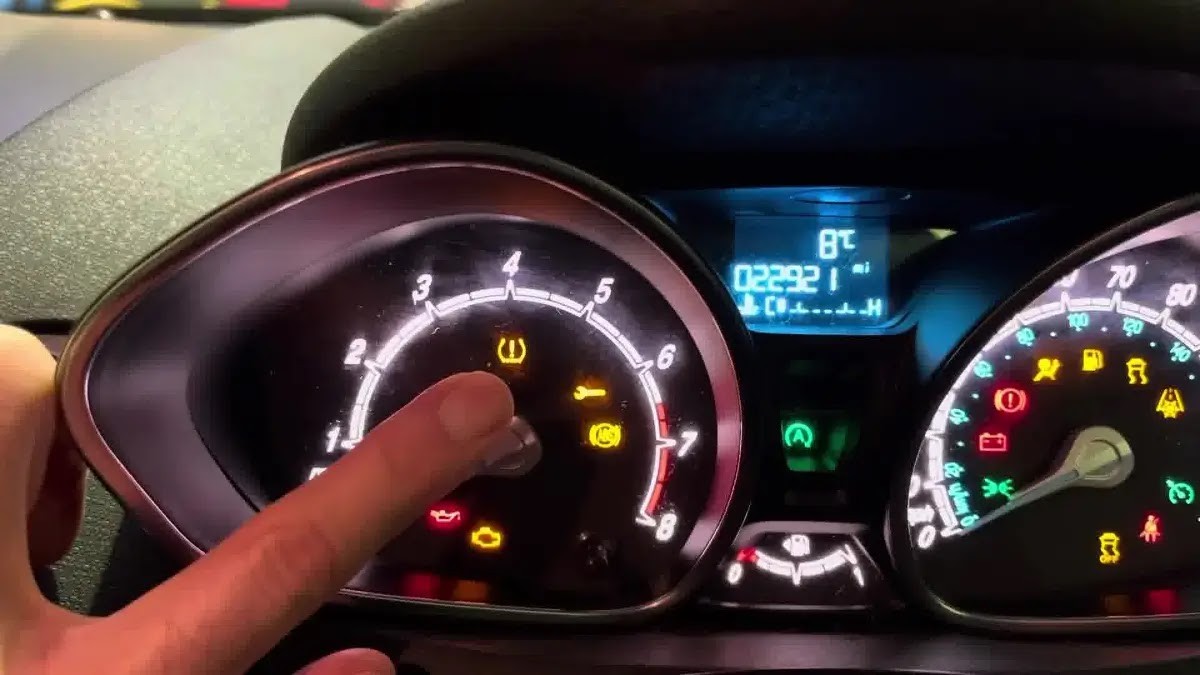Maintaining the correct tire pressure for your Ford Fiesta is crucial for safety, fuel efficiency, and tire longevity. This guide provides a detailed breakdown of recommended tire pressure specifications for various Ford Fiesta models and tire sizes.
Understanding Ford Fiesta Tire Pressure
The recommended tire pressure for your Ford Fiesta can vary depending on several factors, including tire size, vehicle load, and whether your car has an automatic or manual transmission. Generally, the recommended pressure falls between 32 and 35 PSI (pounds per square inch). However, it’s essential to consult your owner’s manual or the sticker located on the driver’s side doorjamb for the most accurate information specific to your vehicle.
Ford Fiesta Tire Pressure by Tire Size and Transmission
The following tables outline recommended tire pressures for different Ford Fiesta models with automatic and manual transmissions. These pressures are based on normal and full load conditions. Remember to adjust your tire pressure accordingly based on your current load.
Automatic Transmission
| Tire Size | Front (Normal Load) | Rear (Normal Load) | Front (Full Load) | Rear (Full Load) |
|---|---|---|---|---|
| 195/60R15 88V Winter | 33 PSI | 26 PSI | 41 PSI | 41 PSI |
| 195/60R15 88V Summer | 38 PSI | 26 PSI | 41 PSI | 41 PSI |
| … | … | … | … | … |


Manual Transmission
| Tire Size | Front (Normal Load) | Rear (Normal Load) | Front (Full Load) | Rear (Full Load) |
|---|---|---|---|---|
| 195/60R15 88V Winter | 30 PSI | 26 PSI | 41 PSI | 41 PSI |
| 195/60R15 88V Summer | 33 PSI | 26 PSI | 41 PSI | 41 PSI |
| … | … | … | … | … |
Why Correct Ford Fiesta Tire Pressure Matters
Proper tire pressure is vital for several reasons:
- Safety: Correctly inflated tires provide optimal handling, braking, and stability, reducing the risk of accidents.
- Fuel Efficiency: Underinflated tires increase rolling resistance, leading to decreased fuel economy.
- Tire Longevity: Proper inflation ensures even tire wear, extending the life of your tires.
- Ride Comfort: Correct tire pressure contributes to a smoother and more comfortable ride.
Checking and Maintaining Tire Pressure
Use a reliable tire pressure gauge to check your tire pressure regularly, at least once a month and before long trips. Check tires when they are cold, as driving heats up tires and increases pressure, leading to inaccurate readings.
- Low Tire Pressure: Inflate your tires to the recommended pressure using an air compressor. If you notice frequent low pressure, have your tires checked for leaks.
- High Tire Pressure: Release some air using the pin on your tire pressure gauge until the pressure reaches the recommended level.
Ford Fiesta Tire Pressure Monitoring System (TPMS)
Many Ford Fiesta models are equipped with a Tire Pressure Monitoring System (TPMS) that alerts you when tire pressure is significantly low. While TPMS is a helpful tool, it’s still important to manually check your tire pressure regularly.
Resetting the TPMS Warning Light
If your TPMS light illuminates, inflate your tires to the recommended pressure and consult your owner’s manual for instructions on resetting the warning light. This often involves driving for a short distance at a moderate speed. Specific instructions can vary depending on the year and model of your Ford Fiesta. Refer to your owner’s manual for details on resetting procedures using the central screen or dashboard screen controls.
